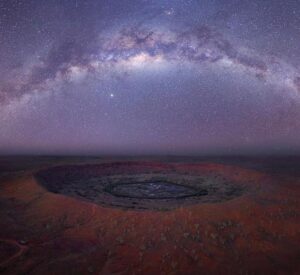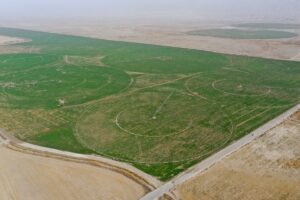A solar eclipse is one of nature’s most awe-inspiring phenomena, where the moon passes between the Earth and the sun, casting a shadow over our planet. This celestial event has fascinated humans for millennia, leading to various scientific discoveries and myths around the world. Here are some enlightening facts about solar eclipses that will deepen your appreciation for this cosmic spectacle.
 Pin
Pin Image Credit: freepik.com
Table of Contents
Types of Solar Eclipses
Solar eclipses come in three main types – total, partial, and annular. A total solar eclipse occurs when the moon completely covers the sun, revealing the sun’s stunning corona. During a partial eclipse, only a portion of the sun is obscured. An annular eclipse happens when the moon covers the sun’s center, leaving a ring-like appearance called the “ring of fire.” Understanding these types can enhance your eclipse viewing experience.
The Path of Totality
The path of totality is a relatively narrow path on the Earth’s surface where viewers can observe a total solar eclipse in its full glory. This path can be up to 150 miles wide and varies with each eclipse. Being in the path of totality offers a unique and unforgettable experience, as day turns into night for a few brief minutes.
Solar Eclipses are Rare for a Specific Location
While solar eclipses occur approximately every 18 months, witnessing a total solar eclipse from any given location on Earth is rare – happening about once every 375 years on average. This rarity makes each viewing opportunity precious and encourages eclipse chasers to travel great distances to witness this natural marvel.
Historical and Cultural Impact
Historically, solar eclipses have held significant meaning in various cultures, often interpreted as omens or messages from the gods. Ancient civilizations, such as the Babylonians and the Chinese, could predict eclipses with remarkable accuracy. These events have influenced art, literature, and even the alignment of ancient architectural structures.
Solar Eclipses Can Create "Baily's Beads"
One of the most enchanting phenomena associated with solar eclipses are “Baily’s Beads.” Just before totality, the rugged lunar landscape allows beads of sunlight to shine through in some places but not others, creating a stunning visual effect.
Scientific Revelations
Solar eclipses have contributed significantly to scientific discoveries. The most famous example is the confirmation of Albert Einstein’s theory of general relativity during the solar eclipse of 1919, which demonstrated that light bends in a gravitational field.
Safety First
It’s crucial to view solar eclipses safely. Observing the sun directly without proper protection can lead to serious eye damage. Special eclipse glasses or solar viewers are recommended for watching any phase of a solar eclipse.
Planning Your Eclipse Experience
For those eager to witness a solar eclipse, planning is key. Research the dates and paths of upcoming eclipses, find a suitable viewing location, and prepare your viewing equipment. Many countries and organizations host viewing events, offering a communal and educational way to enjoy the eclipse.
Call to Action
Don’t miss the opportunity to witness the next solar eclipse. Check the solar eclipse calendar, prepare your viewing gear, and join the millions who marvel at the beauty of one of nature’s most spectacular shows.
Viewing a solar eclipse is an awe-inspiring experience. The best locations can vary depending on the path of totality—the narrow track across the Earth’s surface where the moon completely covers the sun. For planning purposes, knowing the date of the eclipse you’re interested in is crucial, as the path of totality shifts with each event.
General recommendations for finding the best viewing spots:
- Refer to Eclipse Maps: Start by consulting detailed eclipse maps available through reputable astronomy websites and institutions like NASA. These maps provide the path of totality and timings, which are essential for planning.
- Choose a Spot within the Path of Totality: To experience the eclipse in its full glory, including the breathtaking moment of totality, you must be within the path. Locations on the centerline of this path often offer the longest duration of totality.
- Consider the Weather: Clear skies are crucial for eclipse viewing. Research historical weather patterns of locations within the path and aim for places with the lowest chance of cloud cover. Some websites offer statistical data on cloud cover for past eclipses, which can be a helpful guide.
- Accessibility and Accommodations: Popular viewing spots can become incredibly crowded, with accommodations booked months or even years in advance. Consider less-popular, more remote locations that can still offer a great view but might be easier to access.
- Local Events: Many towns and cities within the path of totality organize special viewing events. These can be wonderful opportunities to experience the eclipse with live commentary and the camaraderie of fellow eclipse chasers.
- International Travel: If you’re willing to travel internationally, some eclipses offer paths that cross exotic and less-visited regions. This can add an adventurous aspect to your eclipse experience. Just be sure to consider safety, travel requirements, and local conditions.
- Plan for the Next One: If you miss an eclipse or if the weather spoils your view, keep in mind that solar eclipses occur roughly every 18 months around the globe. Start planning early for the next one.
Each solar eclipse offers a unique viewing opportunity based on its path of totality. By researching and planning well in advance, you can position yourself in an optimal location to witness this celestial phenomenon in its full majesty.
FAQs
A solar eclipse occurs when the moon passes between the Earth and the Sun, casting a shadow on Earth, fully or partially obscuring the Sun’s light in some areas. This celestial phenomenon can happen only during a new moon.
Solar eclipses happen 2 to 5 times a year. However, total solar eclipses, where the Sun is completely obscured by the Moon, are rarer, occurring approximately every 18 months.
There are four main types:
- Total solar eclipses occur when the Sun is completely covered by the Moon
- Partial solar eclipses happen when only part of the Sun is obscured.
- Annular solar eclipses take place when the Moon covers the Sun’s center, leaving a ring-like appearance.
- Hybrid solar eclipses are a combination of total and annular eclipses.
Yes, solar eclipses can be precisely predicted. Astronomers use mathematical models to forecast eclipse dates, types, and visibility locations years in advance.
This is due to the tilt of the Moon’s orbit. The Moon’s orbital plane around the Earth is inclined at about 5 degrees to the Earth’s orbital plane around the Sun, causing the Moon’s shadow to often miss the Earth.
Looking directly at a solar eclipse, especially partial, annular, and hybrid types, without proper protection can cause serious eye damage. Viewing a total solar eclipse is safe only during the brief phase of totality, when the Sun’s disk is completely covered.
Use special-purpose solar filters, such as “eclipse glasses,” or indirect viewing methods like a pinhole projector. Never use sunglasses, smoked glass, or unfiltered optical devices.
The path of totality is the track across the Earth’s surface where a total solar eclipse can be observed. It’s the only location where observers can experience the total phase of the eclipse.
The maximum duration of totality for a solar eclipse is about 7.5 minutes, but most total eclipses last for less time, typically from a few seconds to a few minutes.
Solar eclipses have enabled several scientific findings, including the discovery of helium, the first observational test of Albert Einstein’s theory of general relativity, and insights into the Sun’s structure like its corona and chromosphere.


































